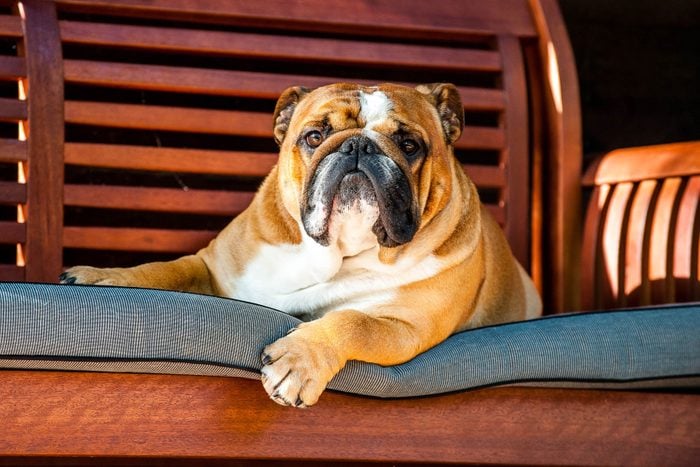
Popular bulldog breeds that make great pets
English bulldogs have long been an American favorite. The classic breed, simply called bulldog by the American Kennel Club (AKC), has served as the mascot for the United States Marine Corps since 1922, as well as nearly 50 universities. But these days, Americans seem particularly keen on bulldog breeds and their wrinkled relatives—one of them even tops the list of the most popular dog breeds in the country.
As a professional pet writer and former president of the Dog Writers Association of America, I love delving into all things dog. And I actually gasped when the AKC announced that the little French bulldog (aka Frenchie) had supplanted the Labrador retriever as the most registered dog of 2022, ending the Lab’s 31-year run as America’s top dog.
Perhaps it’s not surprising. It’s hard not to smile (or giggle) just looking at the adorable flat-faced dogs. According to the AKC, bulldogs are “sweet, devoted and easygoing, and they want to please their owner.” Plus, even though they have a reputation as couch potatoes, well-bred bulldogs can be active and athletic, according to animal behaviorist and AKC Family Dog Director Mary R. Burch, PhD. “In the 2023 AKC Trick Dog National Competition, April Paulman’s bulldog, Mindy, was one of three finalists,” she says. “Mindy performed numerous advanced tricks, including walking on a tightrope. She clearly showed that the breed can be a loving companion and these remarkable dogs can be athletic.”
Official and unofficial types of bulldogs
The AKC currently recognizes only bulldogs and French bulldogs as official breeds, with the American bulldog possibly on its way to recognition after being accepted in 2019 into the Foundation Stock Service. Still, there are other bulldog offshoots and hybrids—under the umbrella term bully breeds—to consider welcoming into your home.
I reached out to eight experts to find out more about bulldogs and other bully breeds. They offered fascinating facts about the breeds, along with advice to heed before you bring home a bulldog.
Get Reader’s Digest’s Read Up newsletter for more pets, cleaning, humor, travel, tech and fun facts all week long.
About the experts
|
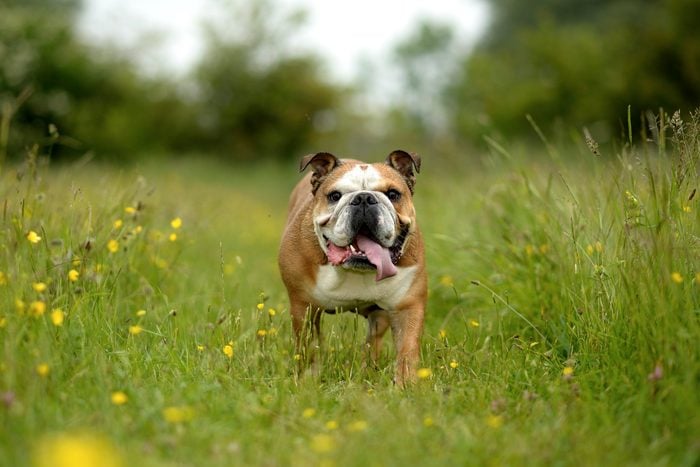
1. English bulldog
With a massive head, snub nose, wide shoulders and droopy jowls, the English bulldog is more recognizable than most breeds. Thanks to their tough looks, they became a symbol of the courage of England during World War II, though their courage has a longer history: In medieval times, they were bred for the long-since-outlawed English sport of bull-baiting. “The bulldog was bred to just latch onto the bull’s nose and not let go,” says dog trainer Teoti Anderson. “A lot of people like to label them as stubborn, but there is a big difference between being stubborn and being persistent.”
Because bulldogs are typically motivated by food, determined owners can use positive training methods to incentivize good behavior. And yes, bulldogs can be trained. Veterinarian Dorothy Wysaski, DVM, trained her English bulldog, Apricot, to compete in agility events so successfully that in 2017, “Appy” became the first bulldog in the United States to earn a Master Agility Champion title from the AKC.
Some bulldogs need to have their face wrinkles cleaned with a dry tissue, used fabric softener sheet or cotton swab every day, like Dr. Wysaski’s current bulldog, Cauliflower. She notes that the wrinkles served a practical yet grotesque purpose when bulldogs were used in bull-baiting: “They could hang on to the nose of the bull, and of course, that would produce a lot of bleeding, and the nose wrinkle would funnel that blood away from the eyes and nostrils,” she says. Luckily, today’s owners only need to worry about food and moisture in the area.
Though bulldogs can risk overheating in hot weather, they do require exercise. Like all dogs, they will live longer if they maintain a healthy weight. Because they have health issues (more on that below), they are very “people dependent,” according to Dr. Wysaski, and have a “loving, deep soul.”
| Breed overview | |
| Height: | 14 to 15 inches |
| Weight: | 40 to 50 pounds |
| Life expectancy: | 8 to 10 years |
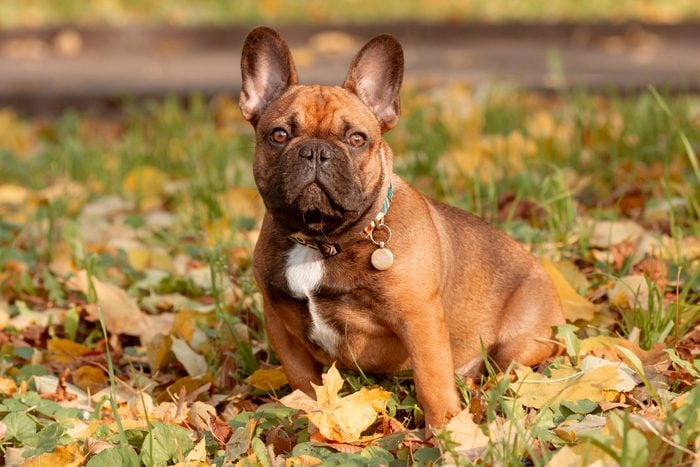
2. French bulldog
With their distinctive bat-like ears and compact size, there’s no denying Frenchies are one of the cutest types of bulldogs. Bred in France to be lap dogs, these pups make excellent companions for people who live in apartments or for older adults, Dr. Wysaski notes. Still, be ready to offer enrichment activities and playtime. “They’re nice for an apartment, but they’re not sitting on the couch. They still want to get out and go,” she says. “They’ve got high energy.”
Like the larger English bulldog, French bulldogs can snore and are prone to health issues, particularly breathing difficulties. Another similarity between the two bulldog breeds: They are not among the cheapest dogs to buy. That’s because pregnant mothers usually require a C-section to account for these dogs’ large heads.
Anderson says it’s fun to train French bulldogs. “Frenchies are very comical. They like to be centers of attention, so they will do all sorts of things to get attention, whether it be naughty or nice,” she says with a chuckle.
| Breed overview | |
| Height: | 11 to 13 inches |
| Weight: | Under 28 pounds |
| Life expectancy: | 10 to 12 years |
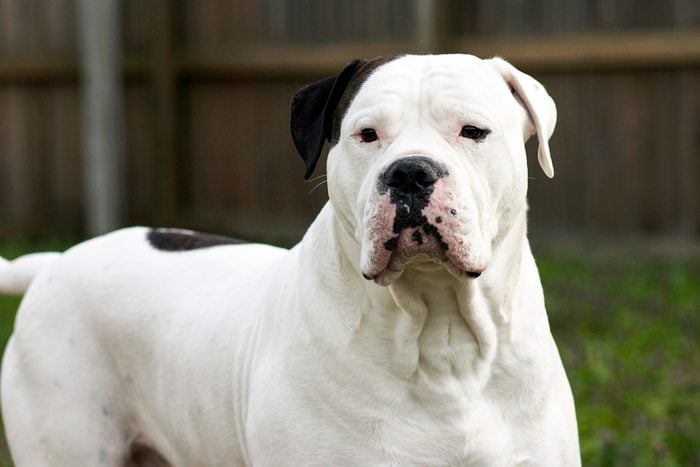
3. American bulldog
The American bulldog descended from the English bulldog but, as the name suggests, was bred in America—specifically, to work on farms and ranches to help with stock and keep vermin away. So while the English bulldog may have a reputation for being a lazy pup, its American descendant is more athletic, according to Dr. Wysaski. “They’re long-legged. They’re slender-bodied. In other words, they look more like a boxer than a bulldog,” she says.
Where have you seen the breed before? It could’ve been in the 1993 Disney movie Homeward Bound, which starred an American bulldog named Rattle as the character Chance. If you’re looking for a bulldog with a longer life expectancy, you might take a chance on this breed. (Couldn’t resist!)
American bulldogs are “very loving” and trainable, Dr. Wysaski adds. But it’s a good idea to pay attention to your pet if a fight breaks out. Her own American bulldog, Ambull, never started a fight, but she also “never saw a fight she didn’t want to join.”
| Breed overview | |
| Height: | 20 to 25 inches |
| Weight: | 60 to 100 pounds |
| Life expectancy: | 10 to 12 years |
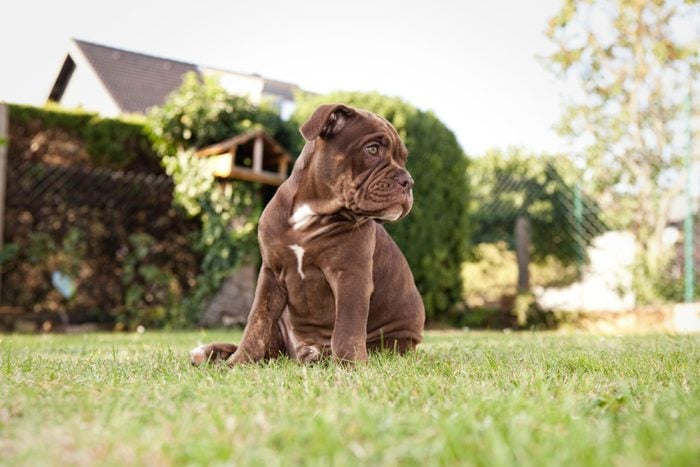
4. Olde English Bulldogge
Despite its name, the Olde English Bulldogge is a relatively new breed, developed in America in the 1970s. “It’s really intermediate in structure and size between the true bulldog and the American bulldog,” says Dr. Wysaski. “In other words, it’s much longer-legged than a bulldog, but it’s not as long-legged as an American bulldog.”
Not sure if this breed is right for your family? Know this: “It’s a big dog—they’re a lot of dog,” she says. Ultimately, though, “it’s just another sweetie, like the bulldog.”
| Breed overview | |
| Height: | 17 to 20 inches |
| Weight: | 60 to 80 pounds |
| Life expectancy: | 9 to 14 years |
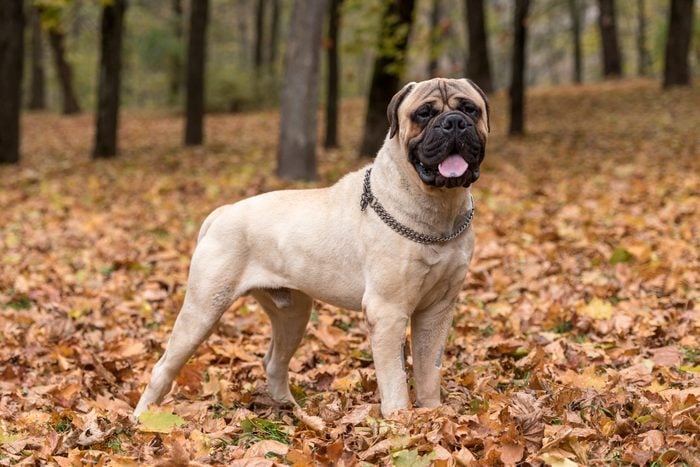
5. Bull mastiff
If you love large dogs, the bull mastiff might be the ideal bully breed for you. The AKC-recognized breed is 60% mastiff and 40% bulldog, and according to the breed standard that breeders strive to attain, it should show “great strength, endurance and alertness.”
From a training perspective, Anderson finds them a bit more even-tempered than some of the other bulldog breeds. “I love bull mastiffs. They can be extremely easygoing, but if pressed into service, they’re willing to serve,” she says. “They can be a little protective of properties, so they can be really friendly to guests you invite in, but if somebody pops over the fence, they’re probably going to be on the scene to deal with that.”
| Breed overview | |
| Height: | 24 to 27 inches |
| Weight: | 100 to 130 pounds |
| Life expectancy: | 7 to 9 years |
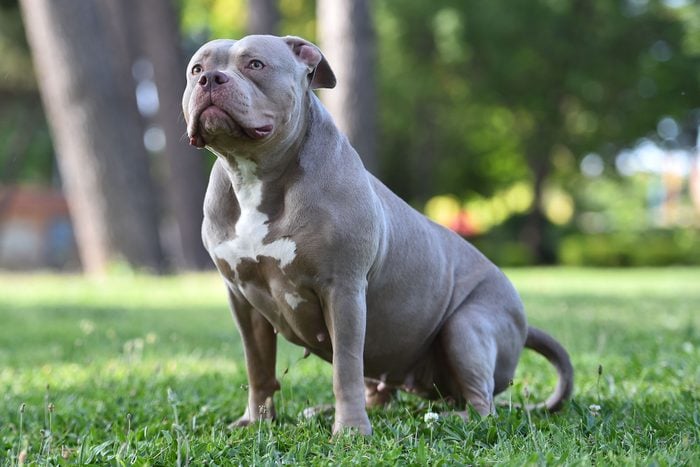
6. American bully
The United Kennel Club describes the American bully as a mix of American pit bull terrier, American bulldog, English bulldog and Olde English Bulldogge. Like the bull mastiff, the American bully is a very physical dog, which can seem intimidating to the uninitiated, according to Anderson.
There are plenty of misconceptions about pit bulls—but these cute pitbull pictures prove they’re some of the most darling dogs around.
“They like jaw-sparring games where they’re clacking jaws, and it looks very fierce, but there’s no damage,” she says. “The friendly term for it is ‘bitey-face.’ They’re playing bitey, and they body-slam each other. They want to touch at all times. So that can be offensive to dogs that are more aloof and standoffish and just want to play distance games.”
That desire to touch extends to cuddling on the couch and leaning up against their people. Because they often have “squishy centers,” Anderson stresses the importance of using positive dog training methods and kindness with American bullies. “Sometimes they get their feelings hurt, so if you apply a harsh hand, you can end up with a damaged dog and a dangerous dog,” she notes. (Case in point: The American XL bully is now banned in the United Kingdom following deadly attacks.) Always socialize American bully puppies and young dogs early to create positive associations with a variety of people, dogs and environments.
| Breed overview | |
| Height: | 20 to 25 inches |
| Weight: | 60 to 100 pounds |
| Life expectancy: | 10 to 12 years |
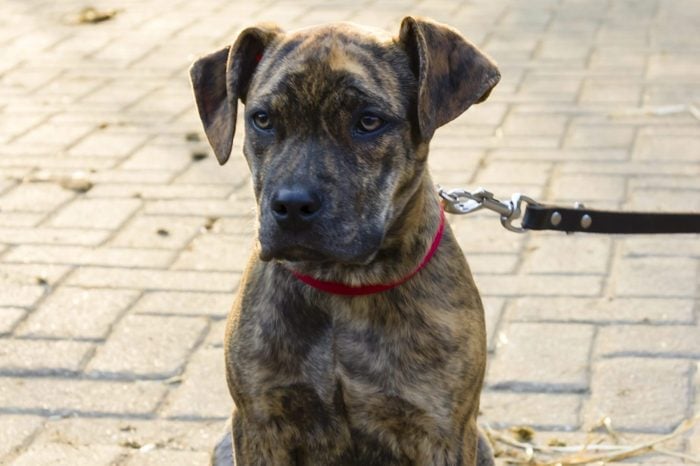
7. Catahoula bulldog
Another made-in-America bulldog breed: the Catahoula bulldog, a cross between a bulldog and Louisiana’s Catahoula leopard dog. The Wyoming-based National Catahoula Bulldog Registry states that this breed can have any eye color and a “powerfully built head with well-defined cheeks and a moderate muzzle.”
Dr. Wysaski notes that this athletic breed was bred to be an all-around farm dog. “I think they’re just sweet, loving, active dogs,” she says. And they’re likely to have fewer health issues than other bulldog breeds. “They’re pretty much problem-free, because there’s not a lot of inbreeding going on in that particular breed because they’re not a front-page, popular dog.”
| Breed overview | |
| Height: | 20 to 26 inches |
| Weight: | 45 to 100 pounds |
| Life expectancy: | 10 to 14 years |
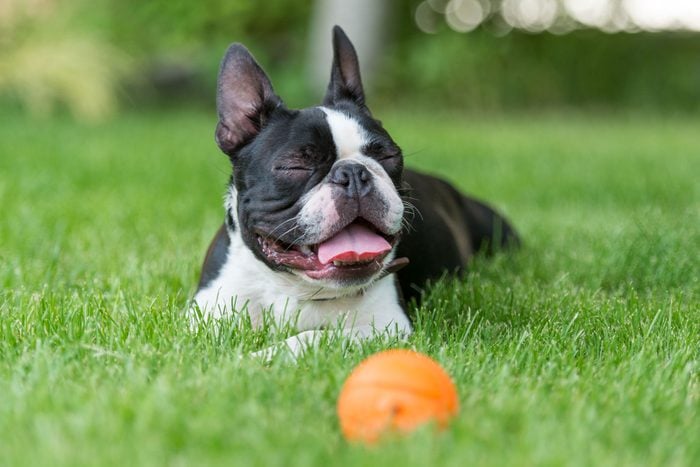
8. Boston terrier
The Boston terrier is also known as a Boston bull. Originating in Massachusetts in the 1860s as a cross between an English bulldog and the now-extinct white English terrier, the so-called “roundhead” went on to achieve AKC recognition in 1893.
These bright, alert little dogs with bulging eyes are one of the cutest dog breeds, especially as puppies. Dr. Wysaski says they are wonderful, compact companions and ideal for bulldog fans hoping for a running buddy. “As a rule, they are much more high energy than a bulldog,” she notes.
| Breed overview | |
| Height: | 10 to 12 inches |
| Weight: | 12 to 25 pounds |
| Life expectancy: | 11 to 13 years |
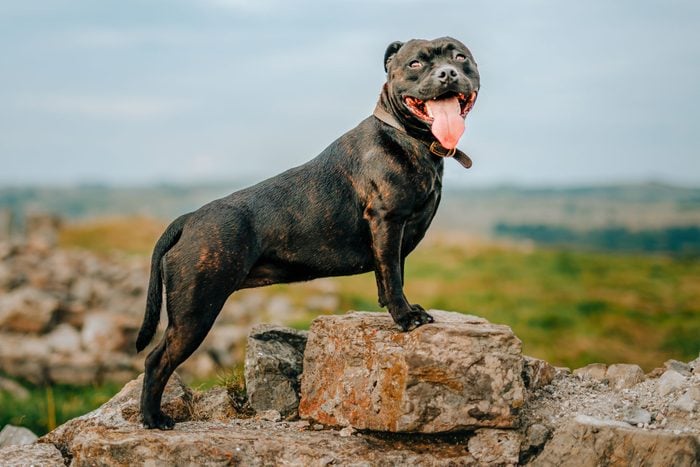
9. Staffordshire bull terrier
The “Staffy” is a small, smart, muscular purebred dog that the AKC notes is particularly affectionate with children. Anderson, who has enjoyed training many Staffordshire bull terriers and other pit bull–type dogs, reiterates the importance of early socialization and positive training—and she encourages owners to be alert around other dogs. “With dogs that were bred to fight each other, they’re generally really good with people because if they turned on their handlers, they were eliminated. With any of the ‘pittie’ breeds, you’re going to have people in different camps,” she says. “There are bad dogs, but there are bad dogs in any breed.”
| Breed overview | |
| Height: | 14 to 16 inches |
| Weight: | 24 to 38 pounds |
| Life expectancy: | 12 to 14 years |
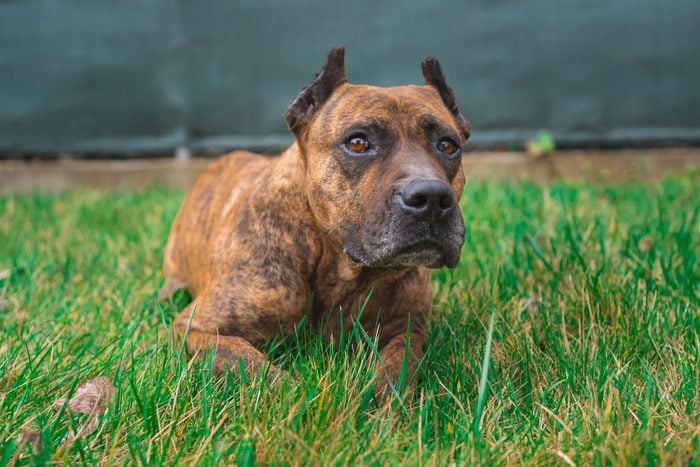
10. Spanish bulldog
Another bulldog breed that’s survived life in the bullring is the Alano Español, or Spanish bulldog. The breed is not common in the United States (or outside of Spain). In fact, it was thought to be extinct until a few surfaced as working dogs in the remote mountains of Spain in the 1970s.
“These dogs used to be war dogs and would fight in the bullring. Thankfully, we have moved on from that,” says veterinarian and pain specialist Jaclyn M. Coble, DVM. “They are still used as hunting, guarding and herding dogs.”
| Breed overview | |
| Height: | 21 to 26 inches |
| Weight: | 84 to 110 pounds |
| Life expectancy: | 11 to 14 years |
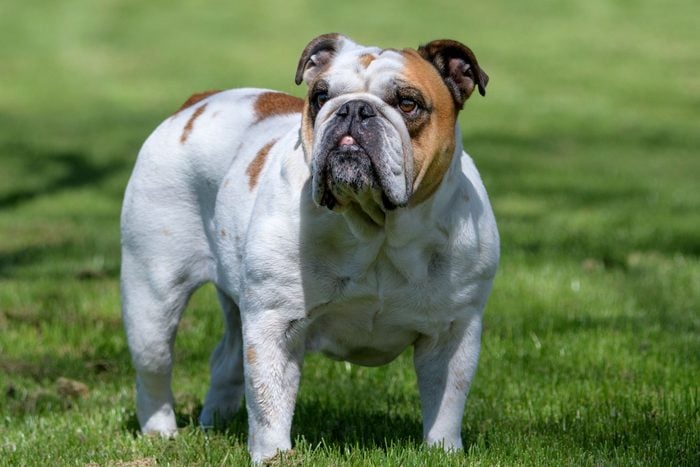
11. Australian bulldog
You’re not likely to encounter an Australian bulldog in the United States, though you can probably guess where these pups live. They sprang up in the 1990s when breeders in Queensland, Australia, attempted to maintain beloved English bulldog traits like loyalty and body structure while creating a bulldog breed “more functional and appropriate for the Australian conditions,” according to the Aussie Bulldog Club of Australia.
As Dr. Coble explains, “Australian bulldogs have better adapted to the hot climates of Australia. English bulldogs are very sensitive to heat. If the temperature is above 75 degrees, keep them in air conditioning.”
| Breed overview | |
| Height: | 17 to 20 inches |
| Weight: | 51 to 77 pounds |
| Life expectancy: | 10 to 12 years |
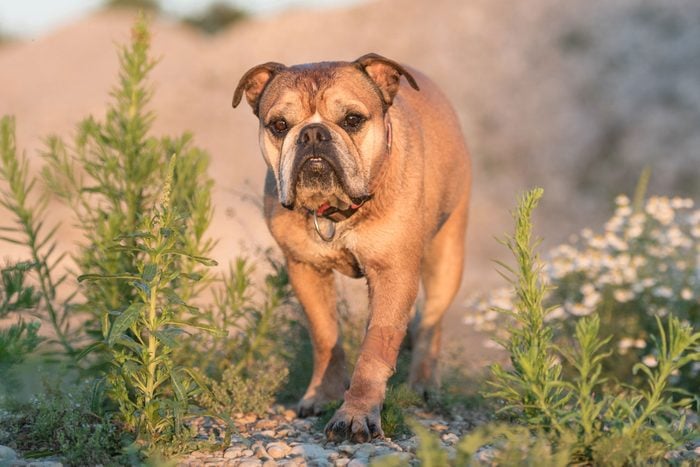
12. Continental bulldog
Chalk up the rise of the Continental bulldog to Swiss efficiency. According to Switzerland’s Continental Bulldog Club, which was founded in 2004, “Conti” breeders strive to create a healthier bulldog than the English bulldog. It involves crossing the English bulldog with the Olde English Bulldogge.
The timing is good: There are ongoing efforts in parts of Europe to ban the breeding of English bulldogs out of concerns that the brachycephalic (flat-faced) breed suffers too many health issues. In January 2022, for instance, a Norwegian court instituted a ban on breeding English bulldogs (that was overturned later that year). And in England, a 2022 study by the University of London’s Royal Veterinary College found English bulldogs twice as likely to develop a health issue as other breeds. The British Veterinary Association has even launched a #BreedtoBreathe campaign.
If you share those concerns, a Continental bulldog may be the right choice for you.
| Breed overview | |
| Height: | 15 to 21 inches |
| Weight: | 48 to 66 pounds |
| Life expectancy: | 10 to 14 years |
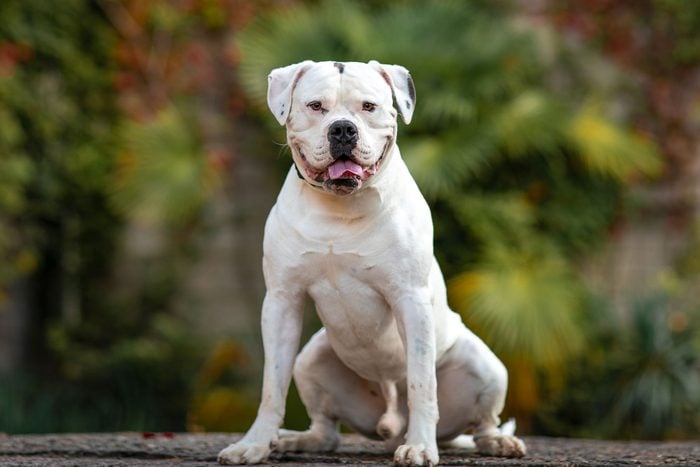
13. Shelter bulldog
The popularity of bulldog breeds has led to a market flush with “designer” bulldogs without any health standards and backyard breeders selling bulldogs for a profit. A much better alternative is adopting a bulldog from a shelter, especially since shelters across America are overflowing with both purebred and mixed-breed dogs, according to Stephanie Filer, executive director of the nonprofit Shelter Animals Count, which maintains the database of U.S. animal sheltering statistics.
“The new data that Shelter Animals Count analyzed from 2023 found that not only were shelters in crisis from last year, but we actually have more than a million extra animals that are still in shelters today since the start of 2021,” she says. “That’s put an unbelievable burden on shelters to, well, create space.”
The numbers are grim: “Non-live outcomes” for shelter dogs rose 24% from 2022, with 360,000 dogs euthanized in 2023. Filer, who adopted an American bulldog mix named Sinatra from an animal shelter, notes that pet adoption sites like AdoptAPet.com offer ways to search for available breeds in your local area and even set up breed alerts. The AKC Rescue Network also lists over 450 rescue organizations for 160 distinct breeds, including the ever-popular French bulldog.
There are other advantages to adopting a shelter bulldog beyond saving a life, she adds. Take, for instance, the affordable adoption fees, included veterinary care (like vaccinations and spay/neuter surgeries) and info about a dog’s health and behavior that you can learn from shelter staff and volunteers.
“One of the great things about adopting a dog from an animal sheltering organization is that you can really pick from a lot of different animals available for adoption,” she says. “For someone looking for a bulldog-type dog, they can not only choose from appearances but age, size, temperament—all sorts of things.”
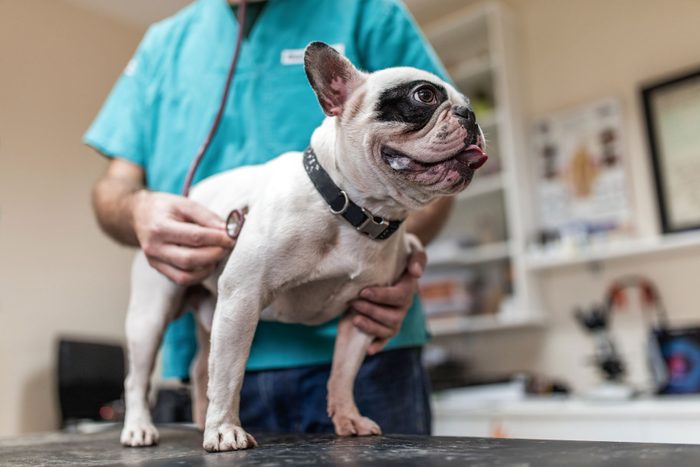
Health concerns with bulldog breeds
The flat faces and snub noses that help make classic breeds like English and French bulldogs beloved are a big reason the brachycephalic breeds can have so many health issues. Of major concern is the proclivity for brachycephalic obstructive airway syndrome (BOAS), which obstructs airflow from the nostrils to the trachea, leading to difficulty breathing, as well as gastrointestinal issues, abnormal sleep and other problems.
In 2023, the nonprofit Orthopedic Foundation for Animals began offering a health screening test to reduce the prevalence of BOAS in bulldog breeds. Essentially, conscientious breeders can have their dogs evaluated and then know if they should continue breeding specific dogs.
Dr. Wysaski believes properly bred bulldogs can avoid these health issues and hopes people who decide to buy a bulldog go through the AKC’s Bulldog Club of America and ask what health testing they’ve performed.
It’s an important question, since dogs with BOAS spend their lives chronically deprived of oxygen, which leads to a shorter lifespan, according to Dr. Wysaski. “A bulldog is old at 8,” she says.
Why bulldogs have so many health issues
It’s well established that bulldog breeds aren’t among the healthiest dogs. But how did they develop quite so many health issues?
National Institutes of Health (NIH) geneticist Elaine A. Ostrander, PhD, whose laboratory conducts the Dog Genome Project, explains that when breeding for certain characteristics (like a flat face), genes for unwanted traits can quickly sweep through a breed population as well. For instance, she notes the leading cause of death in bulldogs is cancer (specifically, lymphoma and mast cell tumors).
“[Breeders are] selecting really hard for that face structure, but piggybacking along could be one of those cancer genes,” she says. “You’re going to get a lot of these traits that you really want, but you may be picking up some negative things as well.”
Or consider the skin folds that give bulldogs their trademark look: These wrinkles predispose them to infections and open sores that can cause pain.
How to find healthier bulldog breeds
To increase the likelihood that your bulldog will be healthy, be wary of backyard breeders and puppy mills breeding dogs to make a profit. Some advertise unusual coat colors, like lilac and blue, or long-haired “fluffy” French bulldogs—even “hairless” Frenchies.
These novelty traits can lead to a host of health issues, according to Ostrander’s NIH colleague Dayna L. Dreger, PhD, one of the world’s leading experts on canine coat color. “Some of the [hairless] variants see issues with the teeth or the nails,” she says. “It depends on which gene is being affected and what type of hairless [dog] they’re introducing. Color-dilution alopecia shows up in a lot of breeds that have a blue color—that’s where the hair will fall out, and they can get crusty bumps or little ingrown hairs and skin issues.”
These are all compelling reasons that people interested in buying bulldog breeds should avoid “exotic” bulldogs and be sure to work with a reputable breeder, according to Jerry Klein, DVM, the chief veterinary officer of the American Kennel Club.
“I always say that a reputable breeder is going to ask the prospective owner more questions than the owner’s going to ask the breeder,” he says. “They’re going to ask about their living situation, if they have a fenced-in yard, how much time they have available. They’re going to be a pain. And you know what? That’s OK, because it’s not a sweater. It’s a living, breathing being.”
How to keep your bulldog healthy
Burch emphasizes that before bringing home a new pup, it’s important to consider whether you are ready to offer a dog a good life with quality time, positive training and exercise.
Dr. Klein agrees, underscoring the importance of keeping bulldog breeds at a healthy weight. Working as an emergency room veterinarian, he saw countless English bulldogs who were overweight or obese. “Obesity is the No. 1 preventable health issue in American dogs today,” he says.
Ultimately, prospective owners should seek out well-respected breeders and dogs that fit their lifestyle. “You’re bringing a dog into your family and your family’s life, and I think you all deserve the best possible,” Dr. Klein says. “Get a good match, because dogs are incredible beings.”
Why trust us
At Reader’s Digest, we’re committed to producing high-quality content by writers with expertise and experience in their field in consultation with relevant, qualified experts. For this piece, Jen Reeder tapped her experience as a longtime pet journalist and former president of the Dog Writers Association of America, and then Caroline Coile, PhD, an award-winning journalist specializing in canine breeds, health and science, gave it a rigorous review to ensure that all information is accurate and offers the best possible advice to readers. We verify all facts and data, back them with credible sourcing and revisit them over time to ensure they remain accurate and up to date. Read more about our team, our contributors and our editorial policies.
Sources:
- Mary R. Burch, PhD, certified applied animal behaviorist, dog trainer, award-winning author and director of the American Kennel Club Family Dog program; email interview, Jan. 21, 2024
- Dorothy A. Wysaski, DVM, bulldog breeder, trainer and exhibitor whose English bulldog, Apricot, became the first bulldog in the United States to earn a Master Agility Champion title from the American Kennel Club; phone interview, Feb. 5, 2024
- Jaclyn M. Coble, DVM, CCRP, CVA, founder of Sea Legs Integrative Veterinary Health in Boston and a veterinarian who specializes in pain management and holistic care; email interview, Feb. 4, 2024
- Teoti Anderson, CPDT-KA, KPA-CTP, dog trainer with over 30 years of experience, a past president of the Association of Professional Dog Trainers, vice president of A Dog’s Best Friend and author of The Dog Behavior Problem Solver and Ultimate Guide to Dog Training; phone interview, Feb. 2, 2024
- Jerry Klein, DVM, emergency veterinarian with over 35 years of experience, chief veterinary officer of the American Kennel Club and emergency department head emeritus of Med Vet Chicago; phone interview, Feb. 5, 2024
- Elaine A. Ostrander, PhD, chief and distinguished senior investigator for the Cancer Genetics and Comparative Genomics Branch of the National Human Genome Research Institute for the National Institutes of Health and head of the Dog Genome Project; phone interview, Feb. 6, 2024
- Dayna L. Dreger, PhD, senior staff scientist in the Cancer Genetics and Comparative Genomics Branch of the National Institutes of Health’s National Human Genome Research Institute and a researcher on the Dog Genome Project; phone interview, Feb. 6, 2024
- Stephanie Filer, executive director of the nonprofit Shelter Animals Count; phone interview, Feb. 6, 2024
- Journal of Veterinary Internal Medicine: “Association between life span and body condition in neutered client-owned dogs”
- PLOS One: “Conformational risk factors of brachycephalic obstructive airway syndrome (BOAS) in pugs, French bulldogs, and bulldogs”
- Veterinary Quarterly: “Brachycephalic obstructive airway syndrome: much more than a surgical problem”
- Canine Medicine and Genetics: “English Bulldogs in the UK: a VetCompass study of their disorder predispositions and protections”
- American Veterinary Medical Association: “Health screening test rolled out for brachycephalic dog breeds”
- Reuters: “Britain to ban American XL bully dogs by the end of the year”

